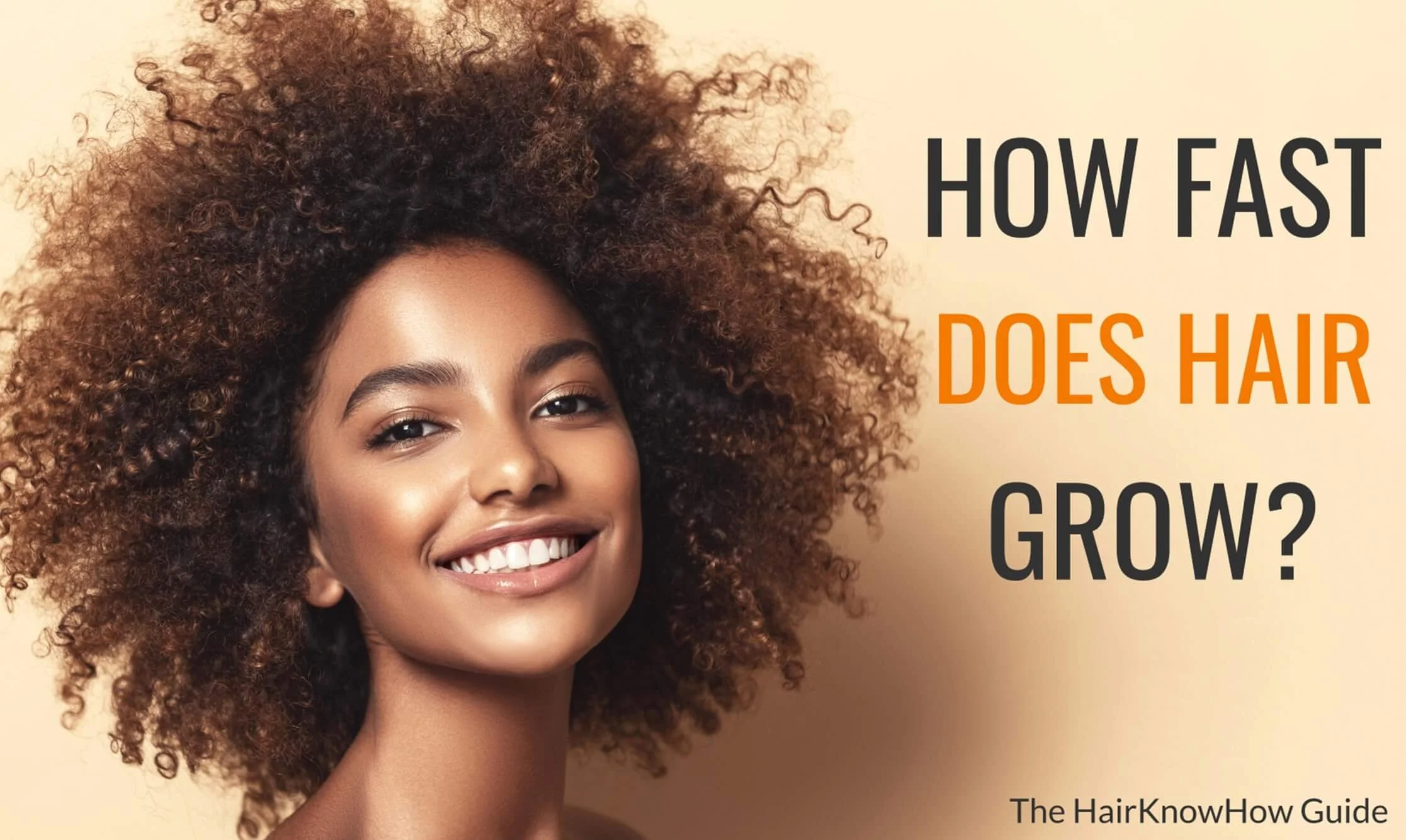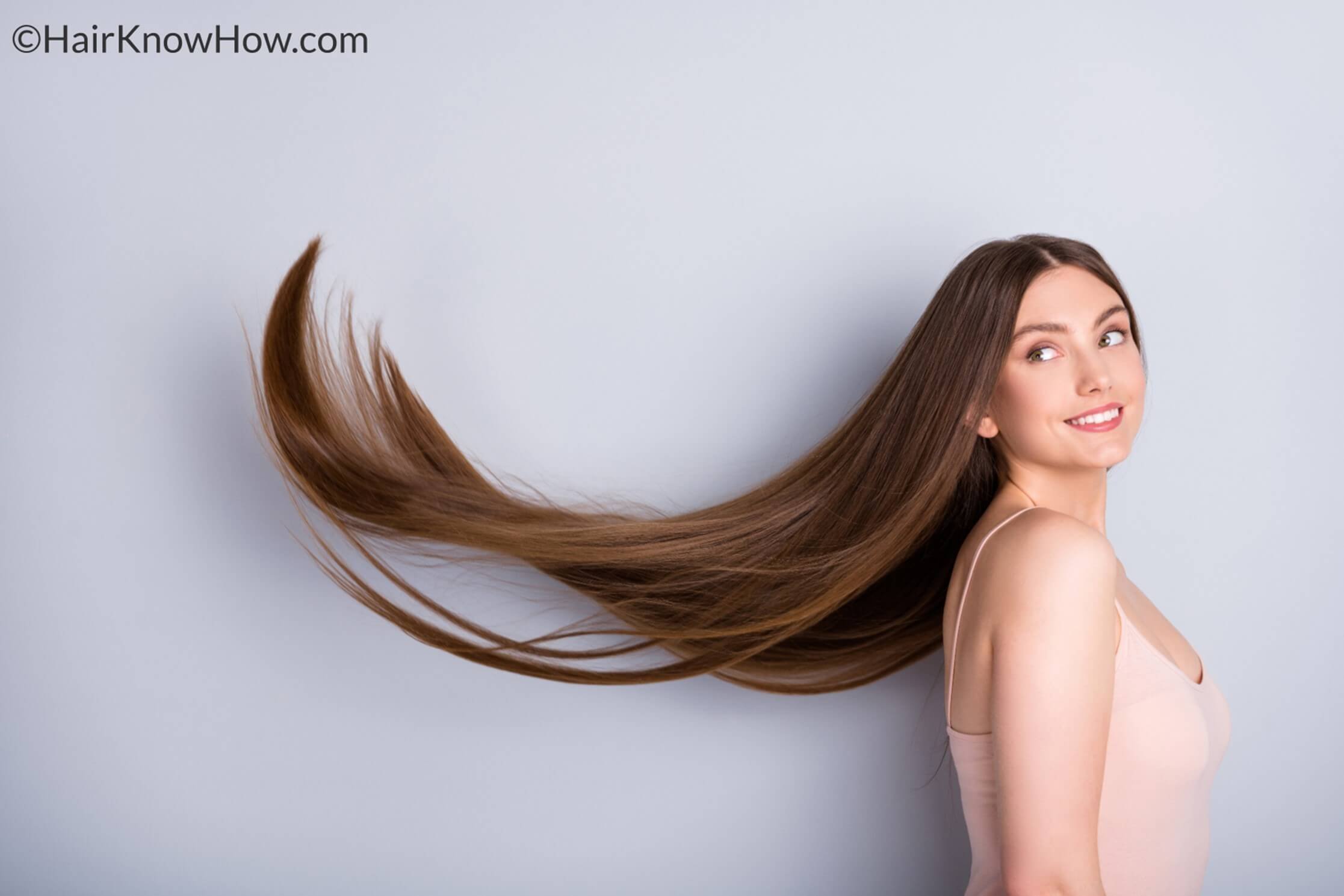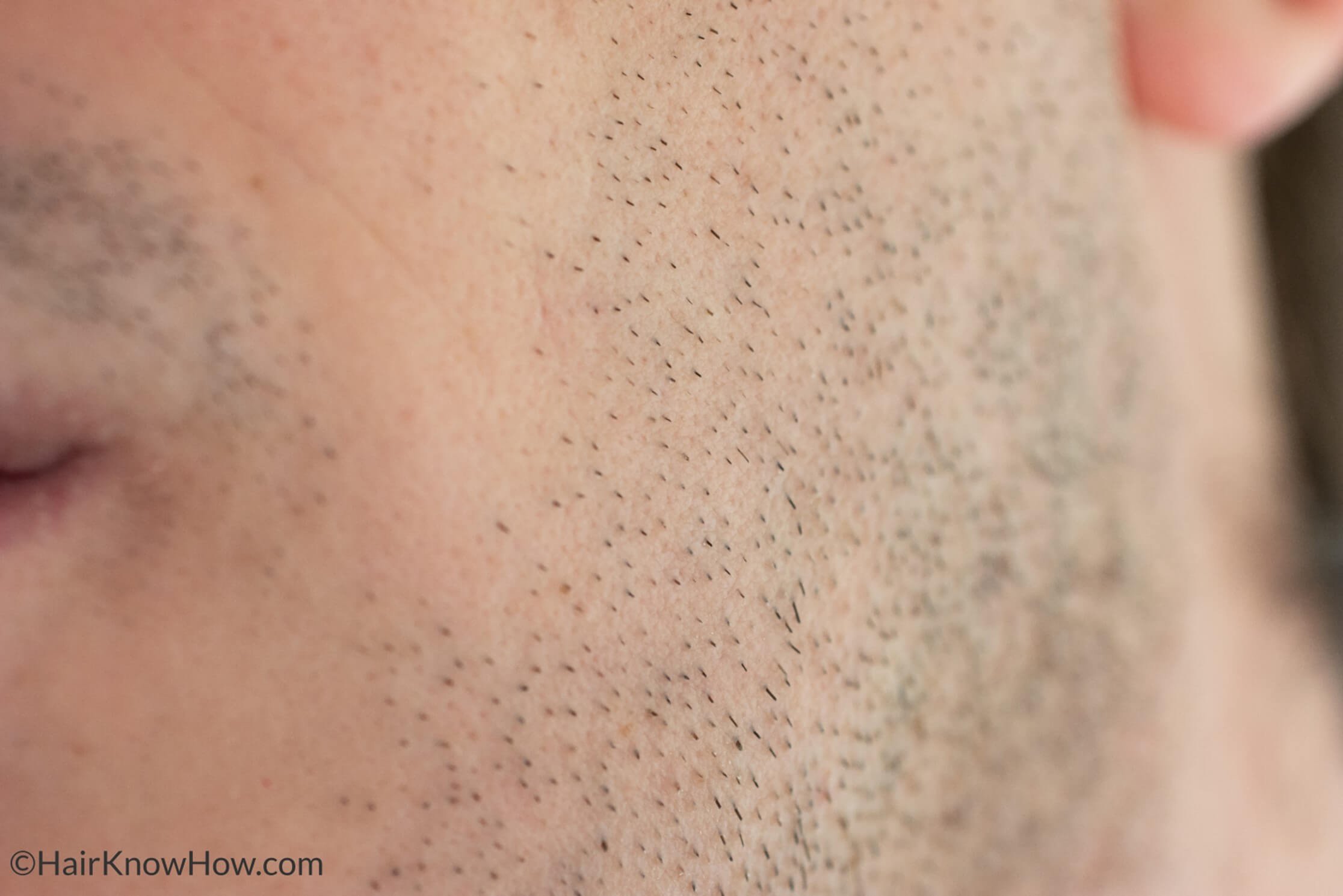Introduction to hair growth
Hair growth grows from small skin organs called follicles in a complex process that is tightly regulated by hormones. The average person has about 100,000 hair follicles, which grow and shed hair in a continuous cycle, called the follicle cycle. The length of this cycle varies from person to person, but the average is up to 13 years.
During the growth phase (anagen), which lasts anywhere from 2-8 years, the follicle grows steadily and produces thicker, longer hairs. The length of the anagen phase varies depending on the location of the follicle and is responsible for the total length a hair fibre can grow. The resting phase (telogen) is when the hair follicle rests, and the hair falls out.
Each follicle has its own individual growth cycle, so only some of the hair on your head is in the same stage at the same time. About 90% of your hair is in the anagen phase at any given time, while about 10% is in telogen.
The speed of hair growth also varies from person to person and is affected by factors such as age, hormones, diet, and stress levels. On average, hair grows about half an inch per month.
How fast does hair grow?
According to the American Academy of Dermatology, the average person’s hair grows about half an inch per month. That’s a little over six inches per year. Some people experience much faster hair growth, while others may notice their hair growing more slowly. Various factors can affect how fast your hair grows, including your age, health, and genetics.
If you’re looking to boost your hair growth, there are a few things you can do. Eating a healthy diet with plenty of protein, vitamins A and C, and omega-3 fatty acids can help.
You can also try taking supplements like biotin or essential oils like rosemary or peppermint oil. While these home remedies won’t work for everyone, they may help some people see an improvement in their hair growth. Refer to our section on hair growth oils for more information.
The science behind hair growth
The average person’s hair grows about half an inch per month. However, this can vary depending on factors such as age, health, and diet.
Age: As we age, our hair growth tends to slow down. This is due to natural ageing processes that occur within the hair follicle. Ageing follicles are also more likely to stop producing melanin. Melanin is the protein responsible for creating the rich colour seen in our hair. Reductions in melanin production is the reason our hair turns grey in colour.
On average, hair grows at a rate of about 0.5 inches (1.3 cm) per month or approximately 0.3 to 0.45mm per day. However, this can vary depending on the individual. Generally, the growth rate is the same for women and men and for hair that grows on different areas of the body. The main difference in hair length at other body locations is due to the duration the follicles spend in the anagen phase of the follicle growth cycle. The longer the follicle is in the anagen phase, the longer the fibre produced.
Health: Hair growth can be affected by various health conditions, such as thyroid disorders, anaemia, and lupus. Nutritional deficiencies can also play a role in hair loss or slow hair growth.
Diet: Eating a healthy diet is essential for good hair health. Foods rich in protein, iron, and vitamins A and C are necessary for promoting healthy hair growth.
Tips for faster hair growth
For those looking to grow their hair faster, there are a few things you can do. First, make sure you’re eating a healthy diet full of protein and other nutrients that are essential for hair growth.
You can also try taking supplements like biotin or fish oil, which are known to be important in hair growth. In addition, be sure to gently care for your hair, for example, using sulfate-free shampoos and including oil like coconut in your conditioners.
Avoid over-styling or using harsh chemicals, as this can damage the hair leading to premature hair breakage, shortening your hair overall and leading to slower growth.
There are several products on the market that claim to promote hair growth. Some of these have been shown to be effective in clinical studies, while others have not. Minoxidil (Rogaine) is one of the most popular and clinically proven products available. It is applied topically to the scalp and is thought to work by increasing blood flow to the follicles and promoting cell turnover.
Finally, consider trying scalp massage or another type of scalp stimulation, as this has been shown to encourage hair growth.
How fast does leg hair grow?
It’s a common question, how fast does leg hair grow? We all know that hair grows, but how quickly does it happen? The answer may surprise you.
According to the American Academy of Dermatology, the average person’s hair grows about half an inch per month. So, if you’re wondering how fast your leg hair grows, it’s around six inches per year.
Of course, this is just an average, and some people may experience faster or slower growth rates. Factors affecting leg hair growth include hormones, age, diet, health and even psychological stress.
In most people, leg hair doesn’t reach more than a couple of centimetres long. This is because the follicle cycle, which produces the hair on our legs, is much shorter than those found on our scalp resulting in shorter hair lengths.
If you’re looking to increase the speed of your leg hair growth, there are a few things you can do. Eating a healthy diet rich in protein and taking supplements like biotin and folic acid can help boost growth. In some jurisdictions, you can also try topical treatments like minoxidil (Rogaine), which is available over the counter.
How fast does pubic hair grow?
The average person’s hair grows about half an inch per month. However, pubic hair grows at a different rate for everyone.
If you’re wondering how fast your pubic hair will grow, there’s no one-size-fits-all answer. However, you can expect the hair to grow about as fast as the hair on your head. For most people, that’s almost half an inch or 1cm per month.
A few things can affect the rate of pubic hair growth. Age is one factor – young people tend to have faster-growing hair than older people. Hormones also play a role – during puberty, both boys and girls experience a surge in hormones that can cause the hair to grow faster. Diet and genetics can also affect the speed of hair growth.
How fast does leg hair grow after shaving?
It’s a common misconception that shaving makes hair grow back faster and thicker. Shaving actually does not affect the rate or thickness of hair growth. Whether you shave your legs, armpits, or pubic area, the hair will eventually grow back.
So how fast does hair grow on your legs? It’s about half an inch or 1cm per month, the same as other body parts.
How much does hair grow in 6 months?
Most people’s hair grows about six inches in a year, and you would expect hair to grow around 3 inches or 7.5cm over a six-month period. A person’s genetics determine how fast their hair will grow, and some people may experience faster or slower growth. You can do several things to help your hair grow faster and healthier.
Eating a healthy diet is vital for hair growth. Make sure you’re getting enough protein, iron, and omega-3 fatty acids. You can find these nutrients in foods like salmon, eggs, spinach, and nuts. Taking a biotin supplement may also help speed up hair growth.
Getting regular trims will not make your hair grow any faster, but it will prevent split ends and keep your hair looking healthy so that the net increase in hair length is healthy with reduced frizz. Try to get a trim every six to eight weeks.
How long does it take to grow hair, 12 inches?
It can take up to 2 years to grow your hair 12 inches. The average person’s hair grows about half an inch per month. So, if you want to achieve waist-length locks, you’ll have to be patient and consistent with your hair care routine.
What 12 inches or around 2 years of hair growth looks like
Here are a few things that you can do to keep your hair healthy as it grows:
Eat a healthy diet rich in protein, vitamins, and minerals.
Use high-quality sulfate-free shampoo and coconut-containing conditioner formulated for your hair type.
Try not to chemically colour or straighten your hair. Chemicals such as peroxides result in massive damage to the hair resulting in a reduction in hair length if treated repeatedly.
Avoid heat-styling tools as much as possible. If you must use them, make sure to use heat-protectant products beforehand.
Don’t brush your hair when wet; this causes increased damage to your hair’s cuticle, which can result in increased split ends and higher porosity.
Get regular trims to prevent split ends from travelling up your hair shaft.
How fast does hair grow per day?
The average person’s hair grows about half an inch per month. So, if you want to know how fast your hair grows, divide that number by 30.2, which works out to be between 0.3 to 0.45mm or 1/32 inch per day.
How fast does hair grow in men?
On average, hair grows about half an inch per month. However, everyone’s hair is different and will grow at slightly different rates.
The growth rate of hair is essentially the same in men and women at about 0.3 to 0.45mm per day or 11cm to 16 cm per year.
How fast does hair grow in women?
On average, human hair grows about 1-1.5cm per month. However, this can vary depending on many factors, including age, health, and diet. For example, people who are pregnant or taking certain medications may experience faster hair growth.
While it’s not possible to change the rate of hair growth, there are quicker ways to alter its length. If you’re looking to increase your hair length, consider trying one of the following methods:
Extending the time between regular trims: Getting your hair trimmed every 6-8 weeks can help prevent split ends and keep your hair looking healthy. However, lengthening the time between trims to 8-12 weeks will allow your hair to get longer.
Trims every three months or so should be enough to help prevent your hair from growing and developing too many split ends. If you end up with a noticeable increase in frizz, then decrease the time between trims by a week or two.
Protective styles: Wearing your hair in protective styles such as braids or twists can help keep it healthy and minimize breakage. This can also give the appearance of hair growth because your hair will be more likely to reach its full length.
Hair care products: Using products that contain ingredients like biotin, keratin or coconut oil can help strengthen your hair and promote increased hair length.
Avoid heat damage: Overusing heat styling tools can damage your hair and lead to breakage. If you’re looking to lengthen your hair, try to give your hair a break from heat styling as much as possible.
Be gentle with your hair: Be careful when brushing or combing your hair, as too much force can cause breakage. Use a mild shampoo and oil-containing conditioner to wash your hair and avoid scrubbing your scalp too vigorously.
Eat a healthy diet: A diet rich in vitamins, minerals, and protein can help promote healthy hair growth. Foods like salmon, spinach, sweet potatoes, eggs and nuts are all great for promoting hair growth.
Reduce stress: High levels of stress can lead to hair loss. If you’re looking to promote hair growth, try to find ways to reduce the amount of stress in your life.
Get regular exercise: Exercise can help improve circulation, leading to healthier hair growth. Just remember to tie your hair up to reduce abrasive fibre-to-fibre damage.
Get enough sleep: Getting enough sleep is important for overall health and can also help promote healthy hair growth.
Limit alcohol consumption: Drinking excessive amounts of alcohol can lead to dehydration, which is not good for your body or your hair.
Avoid smoking: Smoking can damage your hair and skin and lead to hair loss.
Avoid harsh hair products: Using hair products that contain harsh chemicals can damage your hair and lead to breakage. If you’re looking to promote hair growth, try to use gentle, natural hair products.
How long does hair grow in 2 weeks?
On average, hair grows about half an inch per month. So, in two weeks, you can expect your hair to grow about one-quarter of an inch or half a centimetre every two weeks.
How many inches does hair grow in a month?
The average person’s hair grows about six inches per year. However, this can vary based on age, health, and lifestyle factors. For example, younger people with healthier hair may experience faster growth.
Additionally, those who take care of their hair with regular trims and treatments may also see faster growth.
How fast does facial hair grow?
Facial hair grows at different rates for different people. The average growth rate is about 1/2 inch or 1cm per month. However, some people may experience slightly faster or slower growth rates.
Does grey hair grow faster than coloured hair?
Yes! There is some evidence to suggest grey hair may grow slightly faster than pigmented hair!
Hair growth -the conclusion
While there is no exact answer to how fast hair grows, the average rate is approximately 1/2 inch or 1cm per month. Many factors contribute to how fast hair grows, including genetics, diet, and overall health. Several ways to promote hair growth include eating a healthy diet, reducing stress, and using the right hair care products for your hair.
Get Expert Hair Analysis and Help
If you are interested in knowing more about your hair and would like to know how healthy your hair is or perhaps what the best hair care products may be for your hair, then check out one of our HairKnowHow analyses.
Knowing the true condition of your hair should be one of the first steps you take before making those all-important product and treatment decisions.
Get the right products and advice for your hair.
Contact the HairKnowHow Team if you have any questions.










